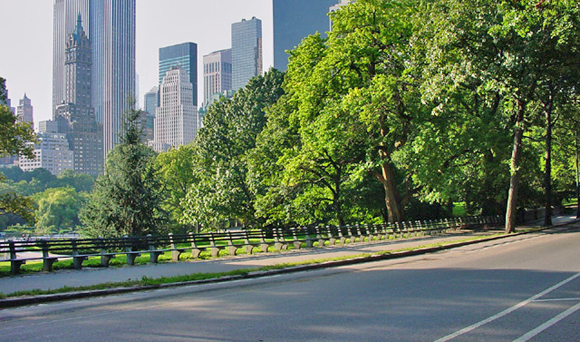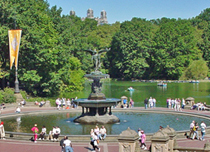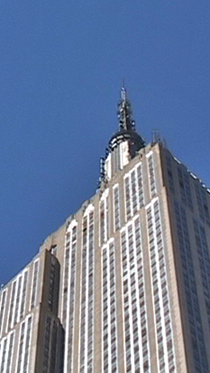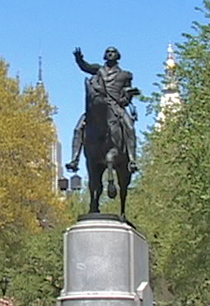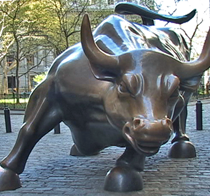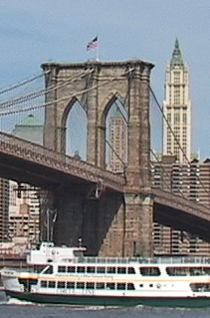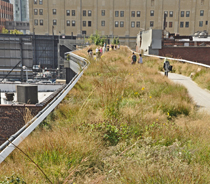November 1, 2024. This Sunday’s the day 50,000 people run along 26.2 miles of New York streets. I won’t be one of them. Because they never stop to eat.
No, if I’m going to cruise through that much of my hometown, I’m going to stop at a few of our 5,000 restaurants to restore some of the calories I’m burning. I’d do it this Way. An 8-mile meandering loop through Central Park. A 6-mile jaunt from Columbus Circle to the southern tip of Manhattan. That’s more than a half marathon right there. Add 7.5 miles to, through and from Brooklyn. Plus 5 miles across Roosevelt Island to Queens.
Now that’s a Marathon that can eat. In fact, there are so many places to eat in this town you can find something delicious near any mile marker of this Way. So get out there. For 1 mile. Or 5 or 10. Or more. Click to see every step of the Way on this big Google Map I made for you.
Love your park
You start at Columbus Circle, the southwest corner of the Park. North Past the ballfields, then east across the 15-acre Sheep Meadow. This really was a sheep meadow until 1934.
Now north again on The Mall, Central Park’s only formal promenade. It’s lined with scores of huge, old American Elms. The saplings were planted during the 1860s; now they form a leafy canopy above The Mall from April until Thanksgiving.
Which brings us to Bethesda Fountain, the park’s centerpiece. “The Lake” is just beyond; you can rent a rowboat by the hour for an upper body workout. Or you can take the Bow Bridge across The Lake at its narrowest point. It’s the most beautiful and graceful of all the bridges in the Park; even if you’ve never been here, you’ll recognize it from dozens of movies and TV shows. The bridgework is the original cast iron from about 1870; the arched wooden deck was restored about 30 years ago.
Next: up into the hills of The Ramble. 37 acres of deep woods in the center of Central Park, in the middle of New York City. The Park’s other 800 acres were radically transformed in the 1860s by the wonderful design of Frederick Law Olmsted and Calvert Vaux. They rearranged about 5 million cubic yards of soil and stone and planted nearly a million trees. Hundreds of new species of deciduous and evergreen trees.
Now back down to The Lake, which they also created. Across the stream, past the Swedish Cottage Marionette Theater (really) and up the steep, winding path though the Shakespeare Garden. Flowers, grasses and dozens of herbs and spices referred to in the plays of William Shakespeare, complete with small plaques quoting passages like, yes, “a rose by any other name would smell as sweet”.
Up some imposing stone staircases to Belvedere Castle, the highest point in Central Park. Back in the late 1800s, its flagpole was the highest point for miles around. During winter, a large red ball was hoisted to the top of the pole whenever Belvedere Lake was frozen and safe for ice skating.
Across the Great Lawn, around the west side of the Reservoir and north to the edge of The Cliff to see the The Blockhouse, an 1814 fortification built to defend against the British. East to the Conservatory Garden, the Park’s formal garden. Its flower beds are elaborately replanted every month or so to feature the season’s best and most colorful.
Continue south along the east side of the Reservoir to the back side of the vast Metropolitan Museum of Art. So vast you can take a 3-mile hike inside. Behind the museum, check out Cleopatra’s Needle, the 3500-year-old, hieroglyphic-inscribed obelisk given to the city by Egypt in 1881.
Further south, past the Conservatory Water and the remote-controlled toy sailboats for rent. Through the East Lawn, past the Central Park Zoo (check to see if the seals are being fed) and around The Pond at the southeastern corner of the Park. And finally, back across to the west and Columbus Circle.
Personally, I’d head straight across 59th Street and half a block down Broadway to Grom, which just might be the city’s best gelato. I’d order a scoop of the Cioccolato Extranoir and a scoop of the Nocciola because I can’t help myself in this place. Whatever your favorite flavor, this’ll be a spectacular version of it. 215 calories for a small (1/2-cup) gelato; just 50 for a small sorbetto. If you feel the 8 miles wasn’t enough to justify two scoops of one of the world’s best ice creams, get one of the chocolate and one of the raspberry sorbet.
Option: Take the “N” or “R” subway at 57th Street and 7th Avenue to Union Square/14th Street. From there, it’s a 5-minute walk to Motorino for profoundly great pizza. They’re all great; $9 – 17 per pie. Even Better: walk the Central Park to The Battery section of today’s Way.
New York Time Travel
From Central Park, the newcomer back in the 1860s, to the southern tip of the Manhattan island. Where the New York we think we know started in 1609 as New Amsterdam, at what we call Battery Park.
We’ll take Broadway from Columbus Circle to Times Square at 42nd Street. Then east to Fifth Avenue with a short detour through Bryant Park to the New York Public Library. Walk up the stairs to pet the big stone lions, Patience and Fortitude. Then eight blocks south on Fifth to the 1931 landmark Empire State Building. There’s usually a very long line to take the elevator up to the observatory, and they won’t let you use the stairs.
So continue south to 23rd Street and the beautiful Madison Square Park. Architectural history to your right: the 1902 Flatiron Building, one of the city’s first skyscrapers. Straight ahead and to the left: the original Shake Shack. Then a few blocks farther to Union Square at 14th Street. There’s a George Washington statue to remind you that New York was the first U.S. Capital. You might spend some time here: the Union Square Greenmarket is the mother of all New York greenmarkets. All possible seasonal fruits and vegetables. The greatest bacon from Flying Pig Farm. Terrific “new crop” polenta and cornmeal grown and milled upstate at Wild Hive Farm. A few blocks east on 12th Street: Motorino’s pizzas.
Onward to Washington Square Park. It opened in 1828 and with another statue of George, of course. There wasn’t much development north of here in the late 18th century so I don’t know how far north George walked. But we’ll continue south and backward in time. Through what’s now called Tribeca. Lots of great little places to eat here at night. You might think about hiking Central Park all morning, then walking south down Broadway to put the Ate in the end of the Walk. Some suggestions in the right column.
George Washington walked here
Keep moving down Broadway to City Hall Park. The new City Hall. The one they built in 1811. While you’re there, look to the west and up 792 feet to the top of the Woolworth Building. In 1913 it was the tallest building in the world. To the south, you see St. Paul’s Chapel, on your right at the corner of Fulton Street. Where George Washington came to pray after his inauguration.
He walked from what’s now Federal Hall. In 1789, it was City Hall. George Washington took the first Presidential Oath of Office at the top of the staircase, where, you guessed it, his statue now stands. Right across Wall Street from the New York Stock Exchange.
Now we’re minutes away from the tip of the island and the view across the harbor to the Statue of Liberty and up the Hudson River. The one Henry named The North River four centuries ago. Cruise the park for ten minutes, past old Castle Clinton, then back to the beginning of Broadway.
Where we’re just a few minutes past City Hall and the pedestrian entrance to the Brooklyn Bridge. What do you think? A spectacular walk across the 1883 Bridge to the center of all things hip?
OK, back to the north. The small triangular park is the Bowling Green, New York’s first park. A group of colonists leased the space from the British for the fee of one peppercorn per year. I checked three sources for this one. Want more? The wrought iron fence around the Green was erected in 1771. Still looks good.
Northward on Broadway through the financial district. In a few seconds you pass that modern art addition, the 3-ton bronze bull. The symbol of Wall Street. Got its name because the Dutch built a big wall there to protect themselves from the Indians from whom they bought the island for $24. Haven’t heard of any plans for another wall just yet.
Now we stroll back through City Hall Park to the Bridge entrance. Just 2.5 miles into central Brooklyn. Then we’ll loop around under the Bridge and head north along the East River. Dramatic views of the Manhattan skyline all the Way along the Brooklyn Heights Promenade and the waterfront. Then through the center of Williamsburg. See every step of the Way on this big Google Map I made for you. And a few of the hundreds of restaurants that have opened here during the last decade.
We’ve covered a lot of space and time. Let’s take India Street to the river’s edge. And the East River Ferry back to Manhattan. If you have another few miles left in your legs, you can always walk across town and stroll The Highline to complete your marathon. Or half-marathon. Or 10K, 5K or 1-mile stroll.
Cost-Benefit Analysis
A walk like this gives you the immediate benefit of a great day. Making exercise a habit gives you the long-term benefit of great health. Cost: free walking, cheap eating.
Every Thing Is Everything
“… modest levels of physical exercise during middle age increased the probability of successful aging beyond 70 years … [reducing] osteoarthritis, falls and hip fracture, cardiovascular disease, respiratory diseases, cancer, obesity, diabetes…” Archives of Internal Medicine, JAMA
Click to see every step of the Way on the big Google Map I made for you
It’s Always Something
If you work out after breakfast to manage your weight, granola may help you burn fat. A study published in The Journal of Nutrition showed that exercise after a high-fiber, low glycemic index breakfast (granola, yogurt, fruit) burned twice as much fat per hour as exercise following a high glycemic breakfast (cornflakes, milk, white bread, jam).
Putting the Ate in The Marathon
The big Google Map includes some eating “detours”. In Tribeca:
Terroir Tribeca (24 Harrison St.) is 6 blocks west of the trail, about 10 minutes. Dozens of snacks, small plates, cheeses from $3 – $10; the coolest wine by the glass selection in town. If you take this detour near the end of The Walk, it won’t be a detour, it’ll be the end of The Walk. Food by the great chef, Marco Canora.
Blaue Gans (139 Duane St.) is a 1.5 block detour. Great Austrian-German brunch for $7 – $10 from 11a until midnight.
Nam (110 Reade St.) is 2 blocks off the trail. Get the $7 green papaya salad with shrimp, dried beef, roasted peanuts, aromatic herbs. Spring rolls, salads, $6-9.
